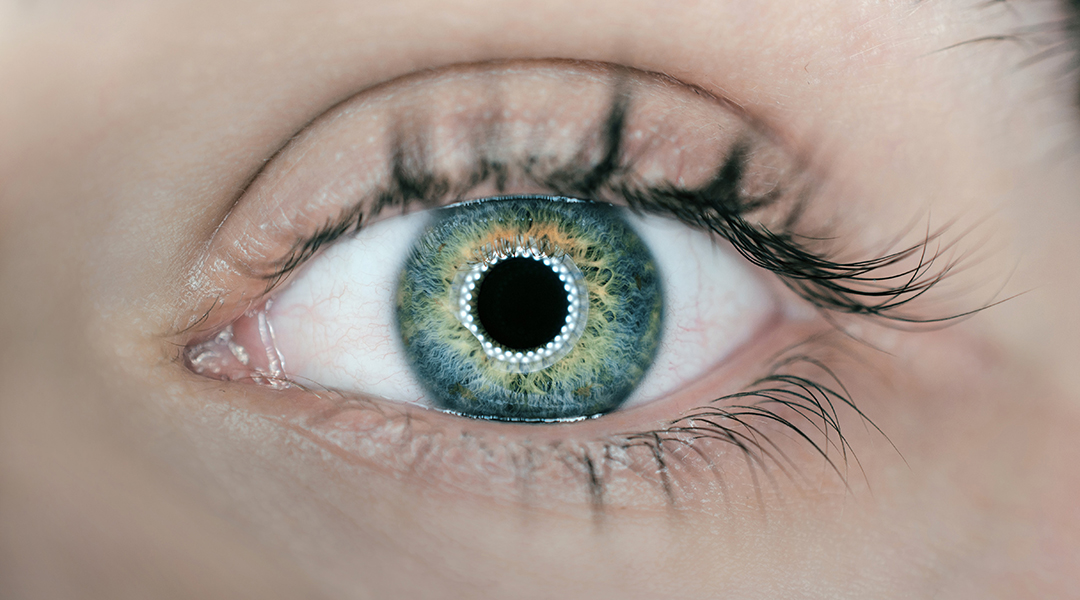Implantable neural interfacing devices are widely applied in different clinical settings for monitoring brain activity. However, these devices are highly invasive and therefore must be bioinert, physically soft to minimize damage, and small enough to implant. The device itself notwithstanding, the injection procedure requires a high precision operation, which carries its own risks.
Thus, a team of researchers from the Microelectronic Lab (meLAB), led by Dr. Hadi Heidari at the University of Glasgow, and in collaboration with Wöhlk Contactlinsen GmbH and Aarhus University ask: Could we monitor brain activity and other vital signs in a safe, non-invasive way?
Traditionally, contact lenses have been utilized for treating vision impairments such as myopia, hyperopia, and astigmatism. In addition, electronic contact lenses have been considered as an effective, non-invasive platform for detecting and diagnosing vital signs and biomarkers for various diseases, such as the detection of glucose levels in diabetic patients and in diagnosing glaucoma.
Modified contact lenses are non-invasive and easily wearable and could therefore be a feasible platform to sense and monitor brain activity without any injection or surgical operation. For example, monitoring tear fluid and eye movement are promising biomarkers for diagnosing and monitoring neurological diseases such as Alzheimer’s and Parkinson’s.
However, since conventional wearable devices require batteries, these smart contact lenses would require a means of wirelessly transferring energy to power them. A method called wireless power transfer has been utilized in similar situations, where energy is transferred from a remote power-generating device to a receiver.
Inductively coupling power transfer (ICPT), is a well-established technology that is widely used in biomedical applications where devices require wireless power. ICPT relies on power transfer using magnetic fields generated by two coupled coils, and is ideal for electronic contact lenses due to its scalability, simple design, and high efficiency.
While a promising means of supplying energy, for the constrained donut size of the team’s smart contact lenses (which have an inner diameter of 8 mm and outer diameter of 14 mm), integrating the receiving antenna — which must be seamlessly incorporated into the design without impeding vision — becomes a challenge.
Besides the power and data transfer challenges, the system integration, packaging, and encapsulation is also vital in this miniaturized wearable device. Although recent advances in nanotechnology have made it technically feasible to integrate electronic devices, such as sensors, circuits, transceivers, antennas, and even displays, within the confines of standard-size contact lenses, these components should, of course, not come into direct contact with the cornea or conjunctiva, as this may lead to eye diseases such as keratitis or cellulitis. It therefore goes without saying that the development of flexible and biocompatible encapsulation strategies for integrated components are needed.
To address these challenges, Heidari and his team designed a spiral-shaped antenna for power delivery and communication, which fits in the limited donut shape of smart contact lens while maintaining gain and efficiency. The smart contacts were made using a flexible polyimide — a material commonly used for contacts — and a spiral coil antenna, which was encapsulated with polydimethylsiloxane (PDMS), which is ideal as it is a low cost, transparent, and flexible material. A 3D-printed eye was used to accurately shape the curvature of the lens and the lens was shown to be transmissive in the visible part of the spectrum — indicating it would not impair vision.
The operating frequency of the antenna was 2.4-2.5 GHz, which is a verified medical frequency approved by the Food and Drug Administration (FDA) in the US. In addition, the heat generation during the power delivery process was monitored using specialized software for electromagnetic structures, and was found to have safe electromagnetic exposure in humans.
Such electronic contact lenses may present a new perspective for monitoring vital signs and carrying out diagnoses without the need for painful injections. With the improvement of wider bandwidth and higher transfer efficiency, contact lenses with built‐in electronics could be the next generation of wearable product with capabilities beyond just vision correction.
Written by Hadi Heidari
Research article available at: M. Yuan, et al. Advanced Intelligent Systems, 2020, doi.org/10.1002/aisy.201900190

















